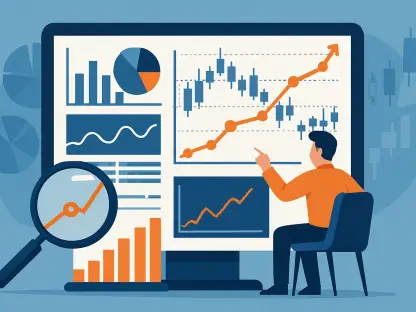In an era where digital communication is vital, email security plays a crucial role in safeguarding personal and organizational data. Recent events highlight the vulnerabilities even trusted services face, revealing gaps in legacy systems. This analysis delves into market trends, underscores the urgency for updated security measures, and examines projections for the future of email security.
Navigating Complex Cybersecurity Challenges
The growing sophistication of cyber threats places email providers in a precarious position. As technology advances, so must the defenses protecting millions of users globally. Understanding the shifting landscape involves recognizing the evolution from basic antivirus software to cutting-edge encryption protocols, which today stand as the bedrock of secure communications. Emphasizing the need for robust security systems, this analysis reveals how past trends influence current practices and inform the designs of tomorrow’s solutions.
Historical Developments Influencing Modern Security Approaches
Tracing the timeline of email security unveils significant milestones that have shaped the current environment. Early challenges such as phishing and spam required the industry to adopt more stringent protections. Over time, the integration of encryption and verification technologies enhanced the security framework, setting a precedent for modern defenses. Today, these advances highlight the journey from simple solutions to comprehensive systems that combat sophisticated threats, paving the way for contemporary email security strategies.
Building a Comprehensive Security Framework
Adoption of Encryption and Authentication Protocols
The introduction of advanced encryption and authentication standards remains a cornerstone of email security. These protocols not only safeguard data confidentiality but also ensure the authenticity of communications between users. The challenge lies in implementing infrastructure that balances robust security with effective user experience. Evaluations of successful case studies illuminate effective strategies, which highlight the complex interplay between security measures and technological capabilities.
Harnessing AI and Machine Learning Advancements
Artificial Intelligence and Machine Learning are crucial in molding the future of email security. These technologies allow for the detection of anomalies and potential security breaches in real-time, significantly reducing response times. While there are concerns about algorithmic biases and data privacy, the benefits of AI and ML, such as automated threat detection and enhanced system efficiency, underscore their importance. These tools represent a progressive step beyond traditional security measures.
Unique Challenges Across Regions and Sectors
Global variations in regulatory standards and market demands create distinct challenges in email security. The stringent data protection regulations in Europe contrast with other regions that may prioritize technological innovation. Addressing sector-specific needs, including emerging methodologies like zero-trust architectures, ensures compliance while fostering progress. The focus remains on overcoming misconceptions about legacy systems and adapting to sectoral requirements, reflecting a need for enduring evolution in email security.
Shaping the Future of Email Security
The trajectory of email security reveals promising pathways driven by innovation and regulation. Quantum encryption and decentralized data mechanisms are poised to redefine secure communications, while laws like ePrivacy bolster data protection standards. Industry insights suggest that as these technologies develop, the cybersecurity landscape will undergo transformative changes. The adoption of these advancements promises to enhance protection, ensuring a more secure digital future.
Strategic Actions for Enhanced Cyber Protection
Implementing effective strategies is imperative for maintaining email security. Regular updates, multi-factor authentication, and continuous user education form the foundation of proactive protection. Both businesses and consumers benefit from open communication regarding security protocols and potential risks, which is essential for mitigating vulnerabilities. Adopting these strategies empowers users and providers alike, offering practical solutions to navigate the complex cybersecurity landscape.
Implications and Strategic Considerations
Reflecting on the findings, it becomes evident that email security remains a critical focus in the digital age. As evolving cyber threats continue to challenge the industry, the necessity for adaptive and innovative strategies cannot be overstated. Providers and users alike must focus on building resilient frameworks to counter future risks. Overall, fostering a culture of security awareness and preparedness is essential for sustaining the integrity and safety of email communications in the years to come.









